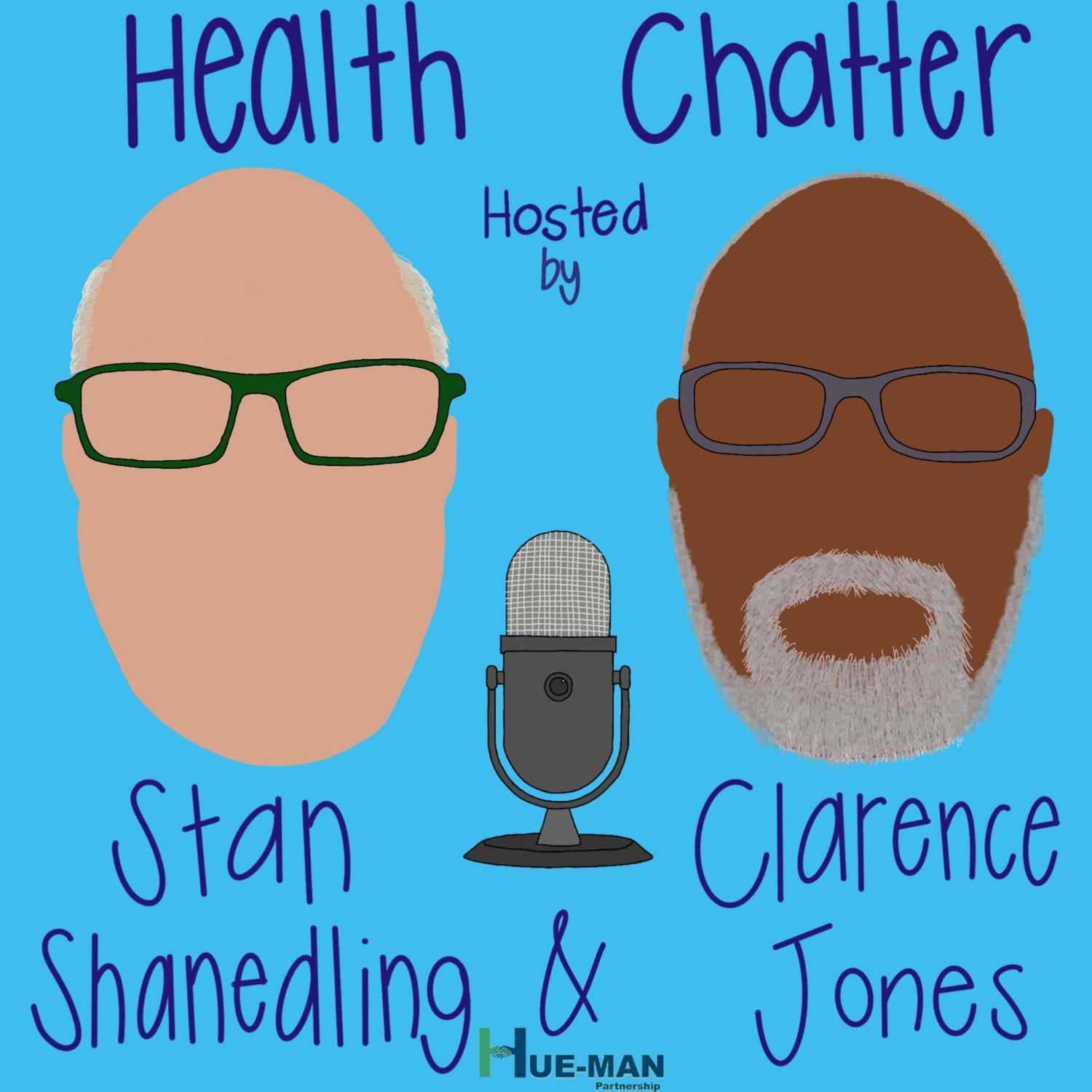July 21, 2023
Asthma
The player is loading ...

Stan and Clarence chat with Dr. Gail Brottman about asthma.
Dr. Brottman is a pediatric pulmonologist at Hennepin County Medical Center and M Health Fairview Pediatric Specialty Clinic. She also serves as an Associate Professor in the Department of Pediatrics at the University of Minnesota. Dr. Brottman also holds several credentials and honors and has been featured in several newsletters, videos, and other media outlets.
Listen along as we chat about asthma.
Join the conversation at healthchatterpodcast.com
Brought to you in support of Hue-MAN, who is Creating Healthy Communities through Innovative Partnerships. More about their work can be found at http://huemanpartnership.org/
Research
- Asthma Basics
- Asthma is a condition in which your airways narrow, swell, and potentially produce extra mucus (Mayo Clinic)
- Makes breathing difficult and trigger coughing/wheezing (Mayo Clinic)
- No cure, but symptoms can be controlled
- Examples → inhalers, self-care (i.e. learning how to manage symptoms)
- 6 steps to keep your asthma under control (ALA)
- Make medical visits more productive (i.e. ask questions)
- Create an asthma management plan
- Assess and monitor your control
- Understand your medication
- Reduce asthma triggers
- Learn about asthma self-management skills
- Can be triggered by exercise, environment, and allergies
- Severe asthma attacks can be life threatening
- Asthma Statistics
-
-
- Asthma is the most common chronic disease among children (WHO)
- In the US, about 1 in 13 people have asthma (AAFA)
- In 2018, the annual economic cost of asthma was more than $82 billion dollars (AAFA)
- According to 2020 CDC data, almost 8% of US population have asthma
- 11% of those with asthma live below 100% of poverty threshold
-
- Asthma Disparities
- Most asthma-related deaths take place in low-middle income countries where lack of diagnosis and lack of treatment is a barrier
- Access to inhalers is also a critical issue (barrier to treatment)
- In the US, asthma rates, deaths, and hospitalizations are disproportionately higher among people of color, seniors, and low-income communities (AAFA)
- non-Hispanic black children are 2x more likely to have asthma compared to non-Hispanic white children
- Asthma is more common in female adults than male adults
- More likely in people with other allergic conditions like eczema
- Increased asthma prevalence is linked to urbanization
- Early life events affecting lung development can increase risk of developing asthma
- Examples → low birth weight, prematurity, exposure to tobacco smoke and other sources of air pollution, viral respiratory infections
- Exposure to environmental allergens/irritants are thought to increase the risk of asthma
- Examples → indoor/outdoor air pollutants, dust, mold, occupational exposure to chemicals or fumes
- Obesity and being overweight are also associated with greater risk of developing asthma
- Individuals who have a parent with asthma are 3-6x more likely to develop asthma compared to someone who does not have a parent with asthma (ALA)
- Smoking (cigarettes) is another risk factor for asthma
- Asthma Resources
- CDC’s National Asthma Control program
- Asthma Support Communities
- Better Breathers Club
- Additional Discussion Topics & Questions
- Air quality alerts
- Alerts are typically higher in the summer (wildfire smoke)
- People with allergies may experience longer and more intense allergy season (longer growing season → more CO2 in the air → higher pollen production)
- Higher pollen levels can increase allergy and asthma attacks
- Learn what types of pollen triggers your allergies (check local pollen levels)
- Avoid the outdoors during high pollen times
- Use dehumidifiers/air filters at home
- Consult your medical provider
- Sensitive groups = those with asthma, heart/lung disease, older adults, children, people doing extended outdoor physical activity
- Health inequities
- People who live, work, and gather near high-traffic roads and industrial areas often face greater health risks because of increased air pollution
- There have been nearly 50 air quality alerts issued in MN since 2015
- Nearly three-quarters have been due to wildfire smoke
- So far, in summer 2023, there have been 19 air quality alerts (Matthew Taraldsen, MPCA Manager for the Risk Evaluation & Air Modeling Unit)
- 14 for twin cities metro area
- Summer 2022, there were 0 air quality alerts
- Summer 2021, there were 20 air quality alerts (current record)
- Nearly 100% certainty that the record will be broken this year (23,000 square miles is on fire in Canada at this moment)
- Tips for staying healthy during air quality alerts
- Take it easy (listen to your body; limit or delay outdoor activity)
- Stay away from local sources of air pollution (busy roads and fires)
- If you have asthma, follow your asthma action plan and keep quick relief medicine handy
- Reduce pollution that’s contributing to unhealthy air quality
- Reduce driving
- Postpone backyard fires
- Follow local burning restrictions
- Sign-up for Air Quality Alerts
- EPA Air Now – Enviro Flash Homepage (https://www.enviroflash.info/signup.cfm; Download the EPA AirNow mobile app from the Apple App Store or the Google Play Store; Visit the MPCA's Air quality and health webpage for information about health and indoor and outdoor air quality and how to prevent air pollution)
- Visit the Minnesota Department of Health wildfire smoke webpage for actions you can take to protect your health against wildfire smoke
Sources
- https://www.cdc.gov/asthma/default.htm#:~:text=Asthma%20is%20a%20disease%20that,that%20can%20cause%20an%20attack.
- https://www.mayoclinic.org/diseases-conditions/asthma/symptoms-causes/syc-20369653
- https://www.who.int/news-room/fact-sheets/detail/asthma
- https://www.lung.org/lung-health-diseases/lung-disease-lookup/asthma/managing-asthma
- https://aafa.org/asthma/asthma-facts/#:~:text=Nearly%2026%20million%20people%20in,about%201%20in%2013%20people.&text=Nearly%2021%20million%20U.S.%20adults%20ages%2018%20and%20older%20have%20asthma.&text=Asthma%20rates%20are%20highest%20in%20Black%20adults%20in%20the%20U.S.
- https://www.cdc.gov/asthma/most_recent_national_asthma_data.htm
- https://www.hennepin.us/climate-action/what-we-can-do/staying-healthy-air-quality-alerts



